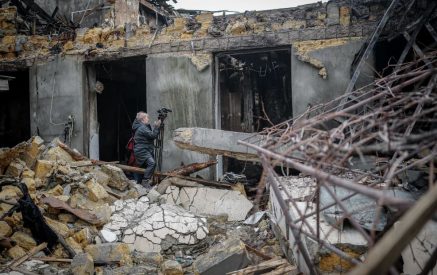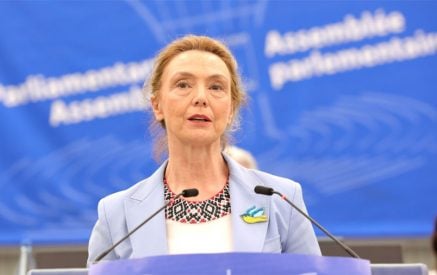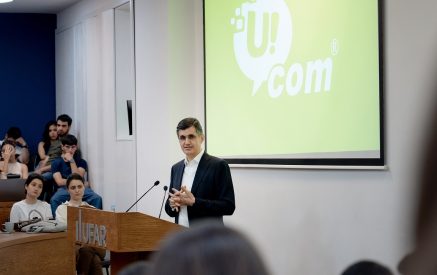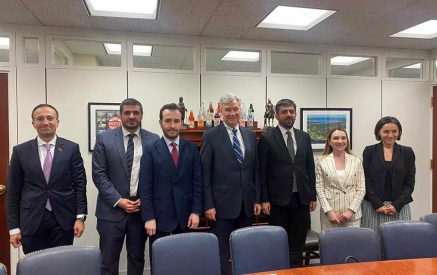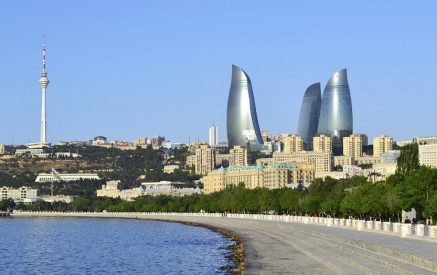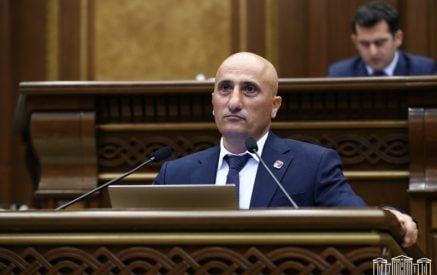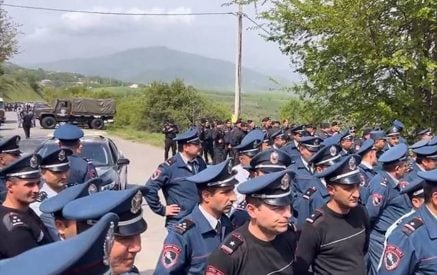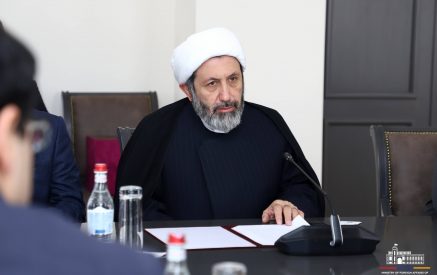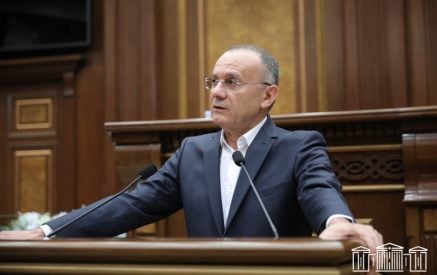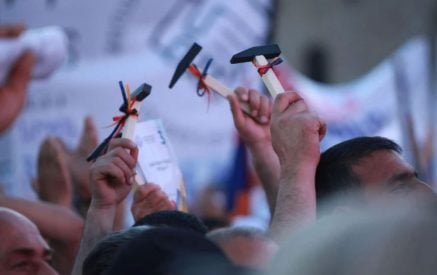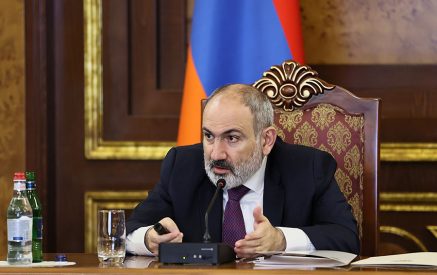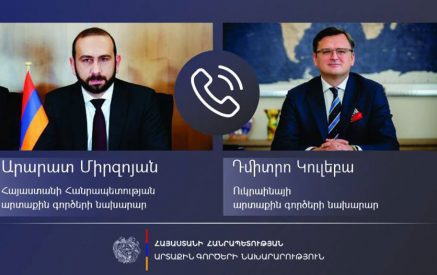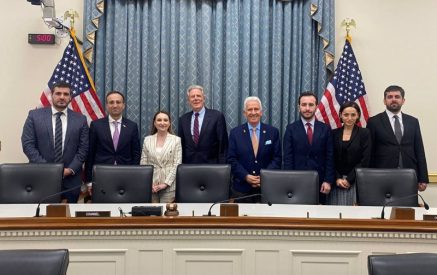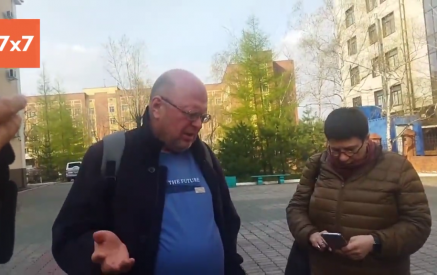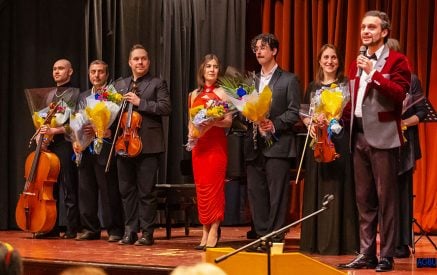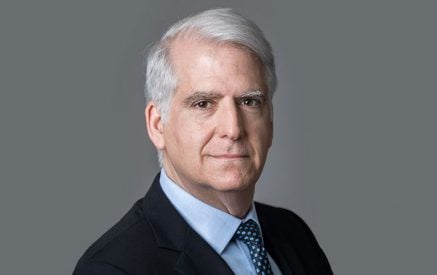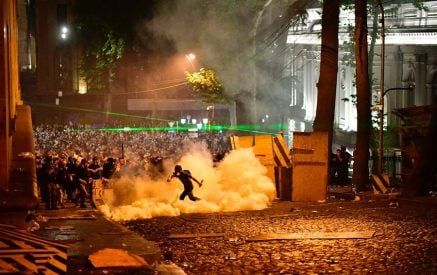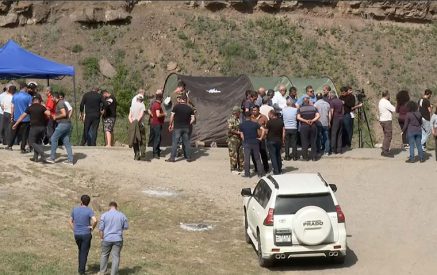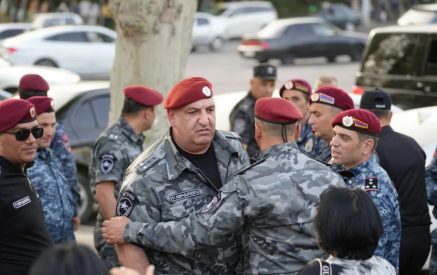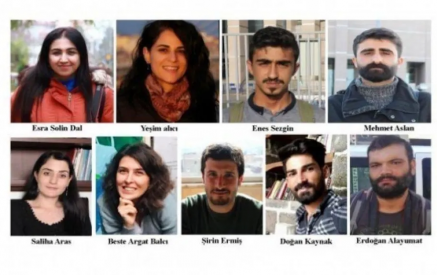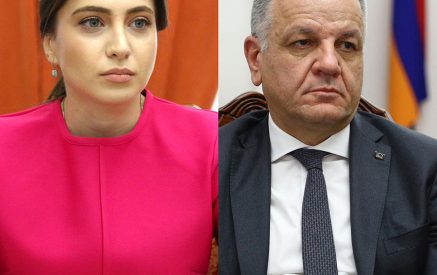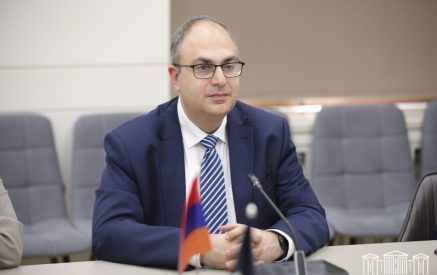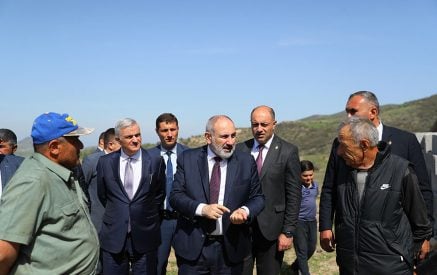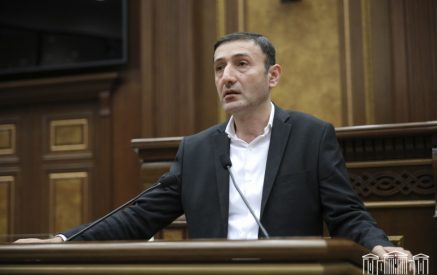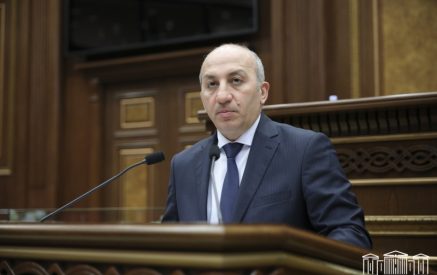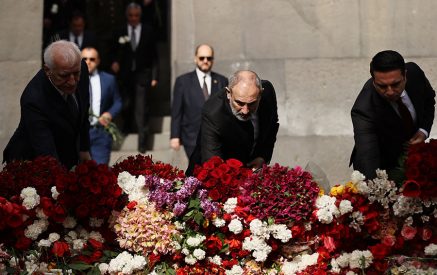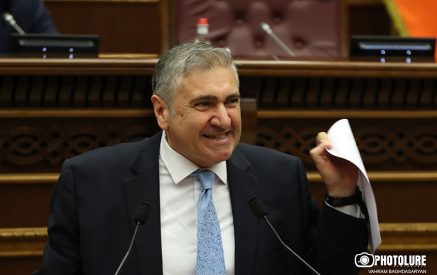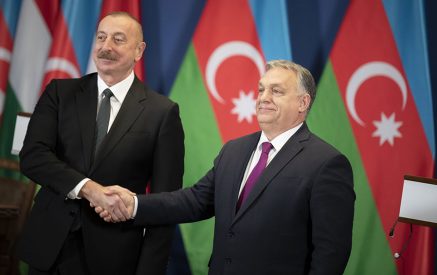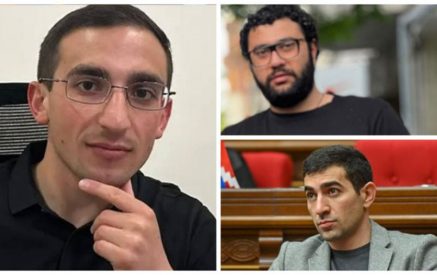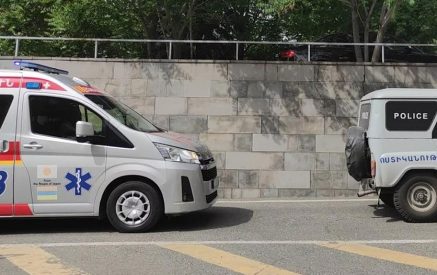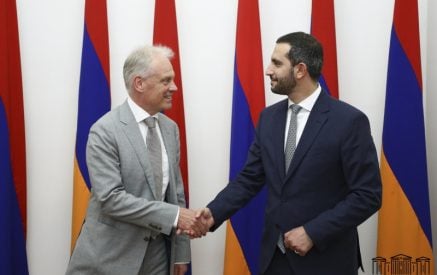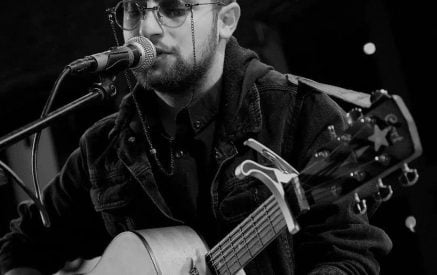Many of our compatriots had applied to the editor of “Agos” weekly to be able to find their families, or just asking for help to return their true identity.
Sarkis Hatspanian’s next lecture form the series “Armenians in their native land after the Genocide” held in “Narekatsi” Art Union was dedicated to Harput, one of the 6 Armenian vilayets in the Ottoman Empire. The extensive lecture was giving an answer to a group of key legal questions about how the Armenians survived in the given territories of the Republican Turkey established on the ruins of the Ottoman Empire (Eğin, Arabkir, Kapan, Dzernak, Bardi, Hozat, Red Monastery, Matskert, Çemişgezek, Harput, Mezereh, Berdak, Peri, Aghjadagh-King, Malatya, Pehesni, Adyaman, Nemrut-Kyakhta), what happened to Armenian Genocide-survivor who did not abandon Harput, and who our fellow countrymen being the citizens of the Republic of Turkey now live in Harput.
The lecture was dedicated to embalm memory of the 1915 Great Genocide victims, Armenian notables from Harput – Grigor Zohrab, Siamanto, Ruben Zardaryan, Tlgadintsi and Erukhan. The speaker informed that after the Berlin Conference, the year of 1878 was followed by redistribution of administrative districts of the Ottoman Empire. The speaker presented the colored map on population density distribution in the territory of the Empire, by nationality. In 1878, the province Harput was divided into 3 Sanjaks – Dersim, Harput and Malatya. The occupied area covered 32,900 square km with population of 575 thousand people, of which about 50 % were Armenians, 27% – Zaza, 22% – Turks and 1% – Syrians. Mezereh was the center of Harput. The speaker introduced one of the lawyers of Hrant Dink, Ms. Fethiye Cetin, who wrote “My Grandmother” book, which was dedicated to her grandmother, Hranush Kataryan (1905-2000), who was one of the Armenian orphans, who was married to a Turkish man and made a family, but the whole life she had a secret correspondence with her relatives who escaped the massacre and were living in the US state of New Jersey. The grandmother’s dream was to once again be in their village, near Havav pair of springs. After the death of the great mother, to keep her memory alive, Fethiye Cetin has supported these dried-springs to repair.
The copy of her letter to Kataryan family written in Armenian handwriting, which was found in the grandmother’s wallet, was also showed. In fact, the population of Harput was 70 thousand people, of which 40 were Armenians, it consisted of 68 villages, of which 53 of them were Armenian. There were 3 missionary colleges in Harput, one – theological and 5 seminaries. The “Euphrates” College had a nation-wide fame, where many subject were taught: mathematics, astronomy, natural sciences, many foreign languages, drawing and so on. Photos of some colleges were shown: “Girls’ College” (founded in 1880), “Hripsimyats Girl’s College” (1862), “Central College” (1887), “Smbatyan College”(1875), “Armenian College” (1911) and co-educational colleges. The photos made at the educational institutions show that the Armenians had also football teams still in the 1870’s (which the Turks attribute to their sports history – G.A.), there were classes of swimming, physical training and homeland study, and the subjects were taught by French, German and American professors who were well-educated by European standards, the latter have published numerous materials in their countries about Western Armenia and Armenians. Once learning them, we experience a great surprise.
Two photos were shown from “Houshamadyan” website, one of which showed 5-6 children of a Turkish school sitting on the ground, the teacher was standing ahead of the children with a birch in his hand, the other one showed a large group of Armenian students of the Armenian school neatly dressed. The number of learners in the province of Harput was 35 thousand, of which 28 thousand were Armenians. The locals were calling the converted Armenians in Harput by the name of koco. According to Sarkis Hatspanian, Today, about 20 Armenian families live in Malatya. There is a Malatya Armenian Union operating in Constantinople, thanks to which a 4-day pilgrimage to the Malatya semi-ruined churches and graves of the dead is organized every year (shown in photos). Hrant Dink was born in Malatya, many of our converted compatriots apply to the editor of “Agos” weekly to be able to find their relatives, or just asking for help to return their true identity. Hran’t role in this matter was great.
The analyst showed a brave Nerme Armenian woman G. Aznavuryan’s photo. Becoming a widow during the 1895 Hamid massacres, she was constantly armed and it was the fear of her that local Turks and Kurds were unable to carry out their planned attack against Armenians in Adyaman during the Adana massacre in 1909. Unfortunately, this educated woman dies in 1912, and her work is continued by her student, and under her leadership, many Adyaman women are taking part in the Battle of Urfa. Here, the following words of Turks are born, “you should be afraid of Armenian women.”
S. Hatspanian showed also his grandmother’s, Hripsime Manushyan’s photo, whose cousin was the Armenian national hero Misak Manooshian in France. Also, his father’s, George Hatspanian’s highly accurate drawn map of the city of Adyaman was shown. Adyaman and Harput Assyrians do not know their native language and speak Armenian and call them Armenians, while the others call them Armenian-Assyrians. According to S. Hatspanyan, the giant monuments of Ancient Gods of the Armenian pagan period are so far standing still on the top of the Mount Nemrut. He told that last year, when a group of pagan Armenians together with the pontiffs from Armenia visited the Ancient Gods, and did a worship ceremony, local Kurds resisted them and instigating the local Armenians, had provoked a fight getting their deserved counterblow. “It is not enough that they have owned our land and the house, now, they are hindering to communicate with their Gods…” Police intervened in the incident. This year, by the Lord’s right, they will surely re-visit the Ancient Armenians Gods. Last year, in the Turkish Grand National Majlis, the Peoples Democratic Party consisted of a group of 36 parliamentarians has presented a bill of recognition of the Armenian Genocide. One of the authors is a Turkmen by nationality, a political prisoner for many years, is a documentary film director by profession and has a documentary film about the Ancient Gods. Publicist Sarkis Hatspanian presented the audience numerous thick books about Armenians and Armenia published in different countries in different years.
He highly appreciated the thick book of Vahe Hayk published in Fresno in 1959, Andranik Poladyan’s “History of Armenian Arabkir” and “Armenian History of Çarsancak” papers published in Beirut in 1956, Dersim Armenians’ ethnography and the map published in the Armenian Soviet Socialist Republic in 1973, Gevorg Halajyan’s book “To the Gallows” published in Boston in 1932, etc., and pointed out that neither Turks, nor Kurds, nor Zaza and Laza, nor Circassians and Chechens and others have either of the listed works. “Thanks to these treasures, we have the irrefutable arguments to be the rightful owners of these areas. And the new generation has a lot to do in this regard, especially in Yerevan. “The stranger takes and owns our home land, while there is no response from our side,” said the lecturer.
To the point, Hambardzum Gasparyan’s book “Çemişgezek and its villages” is intended to be translated into Turkish in Istanbul. The author has also translated “Memoirs of Talaat Pasha” and has composed his reversals in this matter. This work is still unpublished. He has written a three-volume book only about a small village of Hazar, Dersim, where the memory of embalm Raphael Ishkhanyan’s widow, Byurakn Cheraz, comes from. At the end of the lecture, the names of the following prominent Armenians from Harput were mentioned: Totovents, Arshak Mahtesyan, Vahe Hayk, Arpiar Arpiaryan, Misak Metsarents, Nikol Galanteryan, Grigor Zohrab, Erukhan, Siamanto, Ruben Zardaryan, Tlgadintsi and others.
GOHAR ARSHAKYAN

